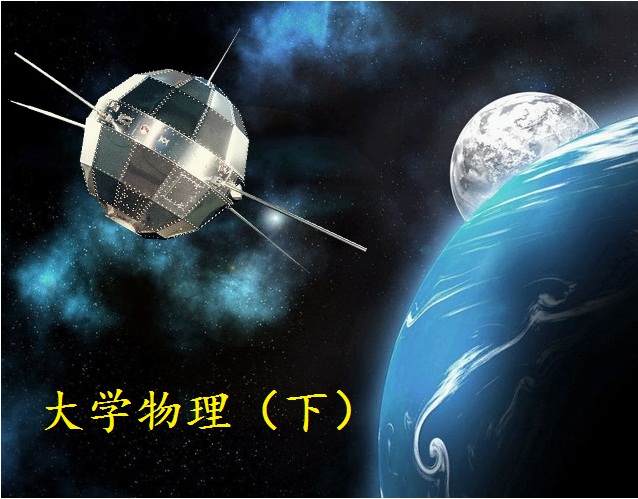
当前课程知识点:“一带一路”沿线国家跨文化商务交际 > 第七章 印度 > 7.1 印度的社会文化背景概况 > 7.1 印度的社会文化背景概况
返回《“一带一路”沿线国家跨文化商务交际》慕课在线视频课程列表
Hi Lilly
have you ever been to India
Not really
but I do have quite a ton of Indian friends in the United States.
Some of them are my former students
They shared something interesting about their country and culture
India is the largest country in South Asia
It sits at the heart of the Indian subcontinent
and borders all of the South Asian countries except Afghanistan
most of which do not share borders.
What else
No matter in the economic military or diplomatic fields
India plays an important role in other South Asian countries besides Pakistan
Then why India is crucial to the Belt and Road Initiative
As China's most important neighbour to the Southwest
India may offer us a great hand in building the Belt and Road Initiative
particularly in the sea route of Silk Road
Okay So much for that Today let’s have a tour in India
Hi everyone
Welcome to our Intercultural Business Tour
I am your lecturer
Qiang Weiru from Dalian University of Foreign Languages
So now please follow me to explore another large yet mysterious country called India
India the largest country in South Asia
sits at the heart of the Indian subcontinent
As China’s most important neighbour to the Southwest
India’s attitude has important implications
for the building of the Belt and Road Initiative
particularly in the sea route of Silk Road
The two countries already have a cooperative relationship
in the Asian Infrastructure Investment Bank (AIIB).
They are also working together to explore the cooperative potential
in their economic and social development
Now I’d like you to enjoy a video
and find out some interesting facts about India
Before you start let’s look at some word tips
Indus Valley Civilization
Vedic period
caste system
Mughal Empire
New Delhi
Kolkata
Mumbai
Chennai
sultan
Jainism
Sikhism
wind instrument
percussion
Okay now let’s start watching the video
it is advisable you take down notes on the following questions
1. What does the speaker mean
when he said that “the ‘Unity through Diversity’
is the main attraction to India”
2. Which civilization is called “one of the first civilizations on earth”
3. What is the name of “the last and the strongest Islamic empire in India”
4. How many major parts is India classified into
5 Which animal is considered sacred by Hindus
6. Being the birthplace of religions
how many world’s major religions is India home to and what are they
Ready Now let’s watch it
In India, more than 1.3 billion people live here
India is a land of many cultural livings
The “Unity through Diversity” is the main attraction to India
by many of the foreign countries
Like the United States
India is also a Federal Union
where almost all of its states carry different language
where almost all of its states carry different language
different cultural identities
Indian civilization is very ancient
The Indus Valley Civilization was one of the first civilizations on earth
he Vedic period was a time in Indian history
when the Hindu religion and caste system began in India
Mughal Empire was the last and the strongest Islamic empire in India
So because of this “Unity through Diversity”
and different cultural identity
India is known as the subcontinent within the Asian continent
So here we see India in people
people with different clothing
people with different religions
people with different food habits
people with different food habits
and people with different celebrations
people living in different localities like urban
semi-urban and rural
So this is how people all carry or live in different localities.
So India is also mainly classified into four major sections
four major parts
The one is North India
The one is North India
with the major city in North India is New Delhi
with the major city in North India is New Delhi
And the Eastern India the metropolitan city in Eastern India is Kolkata
Western India, Mumbai is the metropolitan city in Western India
And South India
Chennai is the south India metropolitan city
Indian people across the nation eat different food as per their geographical availability
Like North Indian people prefer to eat wheat and dough
and South Indian food always carries rice
So all of the Indian vegetables that are available
people take seafood
meat also taken by people
but however cows are considered sacred by Hindus
many of whom are vegetarian
many of whom are vegetarian
So all over India
you can see Masala-spices and people are drinking tea and coffee.
And next we will see about religion
Religion in India is characterized by a diversity
of religious beliefs and practices
of religious beliefs and practices
The Indian subcontinent is the birthplace of four of the world’s major religions
namely Hinduism
Buddhism
Jainism and Sikhism
With the people coming and settling from foreign countries
India also now includes majority of the people living in India
following Christianity and Islam also
Next we will see some matter facts about Indian important historical monuments
India is home to many historical monuments
moguls and the Sultan Indian Kings
moguls and the Sultan Indian Kings
and prior to that, those Hindu kings have built so many monuments across India
Next is music - traditional music of India
Hindustani and Carnatic are popularly known traditional music of India.
Hindustani means classical music of North India
Carnatic means classical music of South India
Melodies Drone
Thala are some of the traditional elements of Indian Music
String wind
and percussion are some of the most commonly used instruments in India music
and percussion are some of the most commonly used instruments in India music
Next is dance - traditional dances of India
Dance is an ancient and celebrated cultural tradition in India
Folk dances are found all across the country
and huge crowds of people can be found dancing at festivals and weddings
Dance and song features heavily in Indian cinema also
So you can see them in Hollywood Bollywood
and everything you see songs that feature dances
So, have you got all the answers
Now, let’s check your answers
1. What does the speaker mean
when he said that “the ‘Unity through Diversity’ is the main attraction to India”
Because India is a Federal Union where almost all of its states carry different languages
different cultural identities
2.Which civilization is called
“one of the first civilizations on earth”
The Indus Valley Civilization
3.What is the name of “the last and the strongest Islamic empire in India”
Mughal Empire
4.How many major parts is India classified into
Four
5. Which animal is considered sacred by Hindus
Cows
6. Being the birthplace of religions
how many world’s major religions is India home to and what are they
Four
They are Hinduism, Buddhism, Jainism and Sikhism
Now, let’s move on to the Country Profile
of India and learn more about the basic info of this country
Its official name is The Republic of India
The official language is Hindi and English.
he currency is Indian Rupee And the capital city is New Delhi
India, officially called the Republic of India
is the seventh-largest country by area
and the second world’s most populous country
with over one hundred ethnic groups
Bounded by the Indian Ocean on the south
the Arabian Sea on the southwest
and the Bay of Bengal on the southeast
it shares land borders with Pakistan to the west
China, Nepal, and Bhutan to the north
and Bangladesh and Myanmar to the east
India is a country that has both diversity and continuity
It is a creative blend of cultures
religions, races and languages
The identity and social fabric of this country is still protected
by a rich cultural heritage dating back at least 5,000 years,
making India one of the oldest civilized countries in the world
Understanding the fundamental components of Indian culture
i.e. the traditions and ways of interacting with others
heir various religious beliefs and conventions
is essential to the success of doing business with Indians
India home to the holy Ganges and Himalayas
has been through severe historical turbulence
and its market has been strengthening
and expanding since the 1999 economic reforms
Geographically
ndia benefits from its proximity to major trade routes in the Indian Ocean
coupled with India’s rich mineral and agricultural resource centres
the Indian economy is seeing a significant inflow of foreign capital
india has a highly competitive and recognized education system
and is one of the largest providers of scientists
engineers and technicians
thus its abundance of local talents have
attracted many foreign companies to the country
-课程导语
-1.1 泰国的社会文化背景概况
-1. 2 泰国的核心文化价值观
-1.3 泰国商务礼仪
-1.4 泰国商务实践
-1.5 泰国商务中的跨文化交际陷阱
-1.6 Discussion
-1.7 Unit test
--1.7 Unit Test
-2.1 新加坡社会文化背景概况
-2.2 新加坡核心文化价值观
-2.3 新加坡商务礼仪
-2.4 新加坡商务实践
-2.5 新加坡商务中的跨文化交际陷阱
-2.6 Discussion
-2.7 Unit test
--2.7 Unit test
-3.1 马来西亚社会文化背景概况
-3.2 马来西亚核心文化价值观
-3.3 马来西亚商务礼仪
-3.4 马来西亚商务实践
-3.5 马来西亚商务语境中的跨文化交际陷阱
-3.6 Discussion
-3.7 Unit test
--3.7 Unit test
-4.1 哈萨克斯坦社会文化背景概况
-4.2 哈萨克斯坦核心文化价值观
-4.3 哈萨克斯坦商务礼仪
-4.4 哈萨克斯坦商务实践
-4.5 哈萨克斯坦商务语境中的跨文化交际陷阱
-4.6 Discussion
-4.7 Unit test
--4.7 Unit test
-5.1 沙特阿拉伯的社会文化背景概况
-5.2 沙特阿拉伯的核心文化价值观
-5.3 沙特阿拉伯商务礼仪
-5.4 沙特阿拉伯商务实践
-5.5 沙特阿拉伯商务语境中的跨文化交际陷阱
-5.6 Discussion
-5.7 Unit test
--5.7 Unit test
-6.1阿联酋的社会文化背景概况
-6.2阿联酋的核心文化价值观
-6.3阿联酋商务礼仪
-6.4阿联酋商务实践
-6.5阿联酋商务中的跨文化交际陷阱
-6.6 Discussion
-6.7 Unit test
--6.7 unit test
-7.1 印度的社会文化背景概况
-7.2 印度的核心文化价值观
-7.3 印度商务礼仪
-7.4 印度商务实践
-7.5 印度商务语境中的跨文化交际陷阱
-7.6 Discussion
-7.7 Unit test
--7.7 Unit test
-8.1 俄罗斯社会文化背景概况
-8.2 俄罗斯核心文化价值观
-8.3 俄罗斯商务礼仪
-8.4 俄罗斯商务实践
-8.5 俄罗斯商务中的跨文化交际陷阱
-8.6 Discussion
-8.7 Unit test
--8.7 Unit test
-9.1 波兰社会文化背景概况
-9.2 波兰核心文化价值观
-9.3 波兰商务礼仪
-9.4 波兰商务实践
-9.5 波兰商务中的跨文化交际陷阱
-9.6 Discussion
-9.7 Unit test
--9.7 Unit test
-10.1南非的社会文化背景概况
-10.2南非的核心文化价值观
-10.3南非商务礼仪
-10.4南非商务实践
-10.5南非商务中的跨文化交际陷阱
-10.6 Discussion
-10.7 Unit test
--10.7 Unit test
-期末考试



